Your Skincare Routine Guide
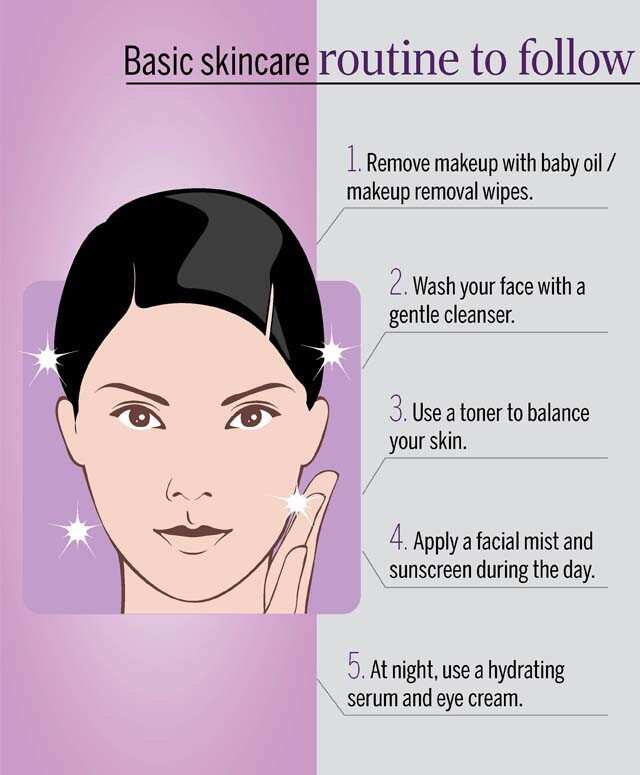
Skincare is the foundation of beauty and skin health. Your body’s largest organ, the skin, is often subjected to the vagaries of stress, pollution, the weather and various other factors. Skin health is important not just for beauty – it helps regulate your body’s temperature, and it acts as a barrier and filter, stopping impurities from entering your system. New skin cells form, as old ones die, and to continue the process of healthy skin regeneration, a proper skincare routine is vital! Let’s find out what the ideal skincare routine is, which you should be following on a daily basis.
Step 1: Ascertain your skin type before you begin
Step 2: Remove all makeup, grime and impurities from your skin
Step 3: Cleanse and wash your face thoroughly
Step 4: Use a toner to balance your skin out
Step 5: During the daytime, apply sunscreen
Step 6: If you’re using makeup, follow these cues
Step 7: At night, make sure you moisturise or use a good serum
Step 8: Finish up your nighttime skincare routine with a sheet mask or face mask
FAQs : Skincare Routine Guide
Step 1: Ascertain your skin type before you begin
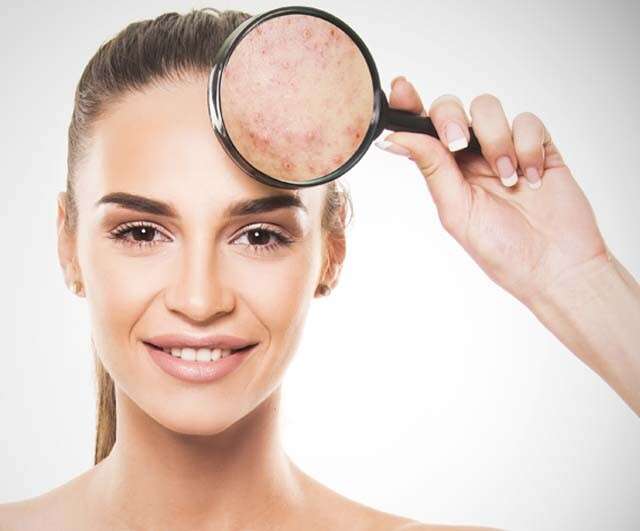
If you haven’t already done this, and are using products or ingredients without thinking, it’s time to press the rewind button and get your basics right! Determining your skin type allows you to choose the right kind of products to use on your skin, and how to treat it as well. While skin types vary extensively, there are three broad categories and yours should fit into one of these – oily, normal/combination and dry. The easiest way to do this is to visit a dermatologist and figure it out. Alternately, a simpler way is to wash your face with a mild cleanser, pat dry and leave it bare for half an hour without applying anything. If you see any oil or shine on your face, you’ve got oily skin. If not, wait another half hour. If you’ve got a shine now, on your nose and forehead, you’ve got normal/combination skin. If your skin has started feeling parched, you’ve got dry skin.
 The Tropical Secret for Healty Weight Loss Know more
The Tropical Secret for Healty Weight Loss Know more
Step 2: Remove all makeup, grime and impurities from your skin
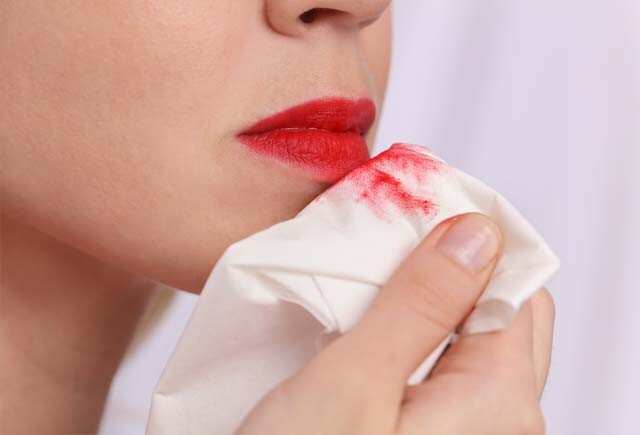
Once you’ve figured out your skin type, choose a good makeup removing technique to cleanse your skin of all traces of makeup, dirt, pollution and other impurities that may have lodged itself in the pores of your epidermis. There are many options for this. A makeup remover wipes from a reputed brand, baby oil, or even micellar water on cotton wool! Use a separate eye makeup remover for the gentle area around your eyes. If you don’t want to invest in expensive makeup removal products or wipes, you can make your own makeup remover wipes at home. Watch this video to find out how!
Step 3: Cleanse and wash your face thoroughly
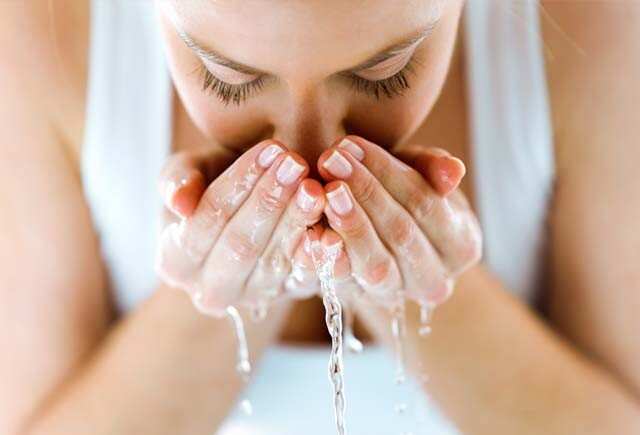
Once you have stripped your face of extraneous substances, wash it with lukewarm water and a mild face wash. If you have oily skin or combination skin , it’s ideal to use a foaming face wash. If you’ve got dry or mature skin, a cream-based face cleanser is ideal. Either way, make sure you pick one for your skin type. Massage the cleanser gently into your skin, in an outward direction on the cheeks, forehead, nose and chin. Splash water on your face till all traces have been removed, and pat dry. At least twice a week, try to exfoliate your skin. This helps dislodge dirt and makeup from deep inside the pores removes dead skin cells (enabling faster skin rejuvenation) and creates a smooth texture externally, as well as healthy-looking skin. Use a store-bought exfoliant, or natural ingredients like sea salt, coffee and sugar. If your skin is exposed to harsh environmental factors and too much makeup, a facial exfoliating brush used once a week at night is also a good idea.
 The Tropical Secret for Healty Weight Loss Know more
The Tropical Secret for Healty Weight Loss Know more
Step 4: Use a toner to balance your skin out
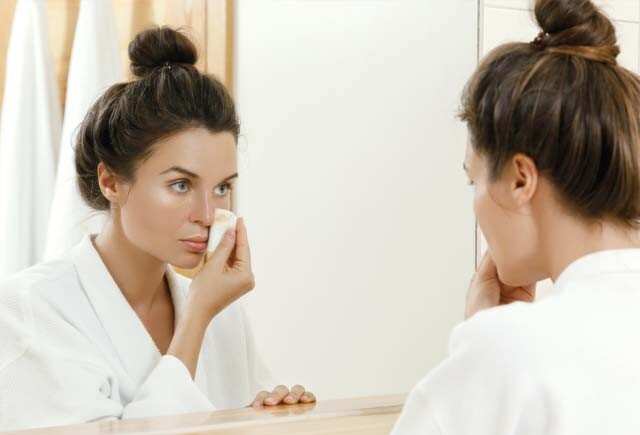
Toning is important in your morning and evening skincare routine. Toners, contrary to popular belief, don’t dry out skin. If you choose the right toner, it balances out the pH levels in the skin, and shrinks pores, prevent blackheads and creates a more even-complexioned skin. If you’re wondering what sort of toners to use, look at your skin type before you decide. They can be astringent-based for oily skin, so as to control sebum production and prevent acne. They can also be water-based for dry or mature skin types, to hydrate and plump up dry and dehydrated skin. After cleansing your face, use a cotton pad on which a small amount of toner has been poured, and gently dab all over your face and neck until you have coated your skin evenly. If you don’t want to use a store-bought toner, both green tea and rose water make for excellent natural toners and are suitable for almost all skin types. You can also dab on some moisturiser, or spritz on some facial mist for additional benefits and skin protection.
Step 5: During the daytime, apply sunscreen
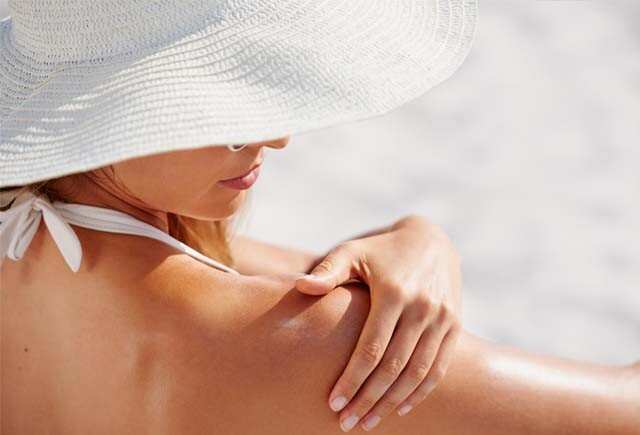
Sunscreen is vital to your skincare routine during the day. Not only does it protect your skin from damage that could be caused by the sun’s harmful UV rays, but it also lowers cancer risks, prevents obvious signs of premature ageing, and prevents sunburn, especially if you have sensitive skin . The key here is to reduce the steps in your skincare routine, and make sure that your sunscreen doubles up as a moisturiser, keeping your skin nourished and supple through the day. Choose a sunblock and SPF that suits your skin type. SPF or sun protection factor is determined by the impact of the sun on the skin. To put it simply, SPF 30 would allow only 1/30 of the sun’s rays on your skin. So if you’re prone to pigmentation, breakouts and sunburn, opt for a higher SPF. If you have a skin that rarely burns, and are instead opting for a nice, even tan, use one with a lower SPF. Either way, consult your dermatologist and seek recommendations from skincare experts before zeroing in on what works for you. Do a patch test before starting off. Sunscreen should be applied all over the face and neck, and ideally on all exposed bits of your body. Don’t forget your lips – opt for an SPF of at least 15. Spray sunscreen is another concept that is fast catching on, but the cream and lotion varieties lend themselves to a more thorough application. For facial sunscreen, every two hours remove the application gently with a ball of cotton dipped in cool water. Pat dry and reapply a fresh coat.
Step 6: If you’re using makeup, follow these cues

 The Tropical Secret for Healty Weight Loss Know more
The Tropical Secret for Healty Weight Loss Know more
Step 7: At night, make sure you moisturise or use a good serum
Vitamin C: It is a common ingredient for anti-ageing , so if you're in your late 30s and 40s, use a serum with this. Not only does this potent component build collagen, but it also boosts skin immunity and should be a part of your skincare routine on a regular basis.
Hyaluronic acids: These are a great way to treat dehydrated skin, without the heaviness of creams and emollients. These trap in the skin's natural water levels, and make sure that it doesn't lose any of its natural moisture, remaining replenished. Ceramides and amino acids also achieve the same results and benefits.
Antioxidants: These are essential to protect the skin from stress and environmental damage. So beta-carotene and green tea are extracts to watch out for, while berries, pomegranate and grape seed extract are other active ingredients.
Retinol: These are serum ingredients ideal for skins prone to acne , while also addressing fine lines and wrinkles.
Plant-based active ingredients: Liquorice, for instance, makes for a natural brightening ingredient and is just right to deal with those pesky sunspots and scars, as well as patchy skin.
Anti-inflammatory: If you have sensitive skin, use a serum with anti-inflammatory properties, preventing redness, breakouts and inflammation. The ingredients to read on the label you need to check out are zinc, arnica and aloe vera.
Step 8: Finish up your nighttime skincare routine with a sheet mask or face mask

Instead of a serum, you can use a lightweight cream to moisturise your skin, and then follow it up with a sheet mask or a face mask. Sheet masks are the ultimate hydrating tool. As your skin soaks in the properties of the sheet mask, it gets rid of all underlying dehydration and dryness, ensuring that your cells are filled with moisture and completely enriched. Whether it is collagen, vitamin C or antioxidants, the active ingredients in the mask ensure a multitude of skin benefits. The hydration masks are also soothing to the skin, since they cool it down, reduce inflammation, and tackle problems like redness due to sun exposure, acne, rashes and so on. They are easy to use, compared to a cumbersome combination of creams and lotions. While the ingredients of all other masks are open to the air, the protective layer of the sheet mask ensures serum is trapped between your skin and the sheet, and seals in optimum moisture and nutrients. Check out this video below, for details on how to nail your bedtime skin regime.
FAQs : Skincare Routine Guide
Can drinking water help enhance your skincare routine?
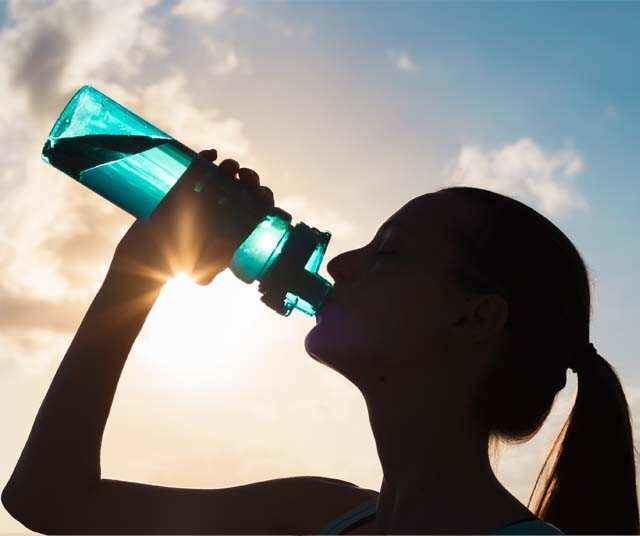
When you drink water, not only does it hydrate your insides, it reflects on your skin as well. It keeps your skin from getting dehydrated and prevents premature fine lines and wrinkling. When your skin is hydrated, it also plumps and firms up the skin, keeping it soft and supple, and lesser susceptible to acne, sunburn and the side effects of pollution. Drinking enough water is also great for the lips since it keeps them firm and hydrated. It is also good to keep the eyes moist as well. Besides, drinking enough water for skincare, keep splashing or spraying it on your face every few hours for that added boost of moisture. Use a facial mist, but if you don’t want to splurge on one, just plain drinking water refilled in a spray bottle every day is a good idea.
What is the right diet to supplement your skincare routine?

While taking care of your skin externally certainly counts, what you put in your mouth also has a bearing on how it looks. Eat plenty of fats – but the good variety, found in nature. Avoid fried food, and opt for natural ingredients rich in Omega 3 fatty acids . Popular foods include salmon, avocado, eggs, walnuts, chia seeds , flaxseeds and soybean. You can prep these on their own, or add them to other foods like salads, bakes and in the case of the seeds and dry fruit, even in desserts – though to be consumed sparingly and within limits!
How much should I exercise for a skincare boost?
Exercising for a minimum of 60-90 minutes everyday releases toxins from the body, and allows you to sweat out skin impurities, cleansing it from deep inside. However, make sure you cleanse and wash your face properly soon after, so that it does not trigger any acne. Your blood circulation increases and the blood rush to your face makes sure you look radiant, and your skin gets plenty of oxygen.


0 Comments